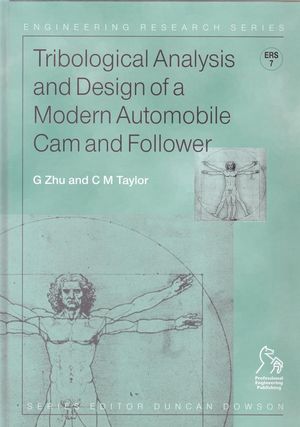Tribological Analysis and Design of a Modern Automobile Cam and FollowerISBN: 978-1-86058-203-5
Hardcover
168 pages
August 2001
 This is a Print-on-Demand title. It will be printed specifically to fill your order. Please allow an additional 15-20 days delivery time. The book is not returnable.
|
||||||
A sophisticated theoretical model has been developed that predicts the tribological performance of the valve train, and also provides a useful tool for the consideration of the tribological design of valve trains. Additionally the model can estimate the instantaneous and average rotational frequency of the follower, and the performance of the hydraulic lash adjuster.
In order to validate the theoretical model, the experimental
measurements have been correlated with the theoretical predictions
that simulate the test conditions of the valve train. The agreement
between the measurements and the predictions show that the model is
very reliable. This gives readers great confidence in using the
model when dealing with novel and alternative designs of the valve
train.
COMPLETE CONTENTS:
-
Part One – Theoretical Formulation. Kinematics and dynamics of the cam and follower
-
Hydraulic lash adjuster
-
The maximum hertzian stresses
-
Asperity interactions
-
The oil film thickness
-
Friction and power loss of the valve train
-
The rotation of the follower
-
The overall solution procedure and input/output data
-
An example of the tribological analysis of a valve train.
-
Part Two – Experimental Study. Test apparatus and the instrumentation
-
Calibration of the instrumentation and commissioning tests
-
Test procedure
-
Data processing
-
Experimental results and discussions
-
Part Three – Correlation of theory and experiments. Experimental evidences
-
Theoretical predictions
-
Comparison of results and discussions
-
Overall conclusions.



